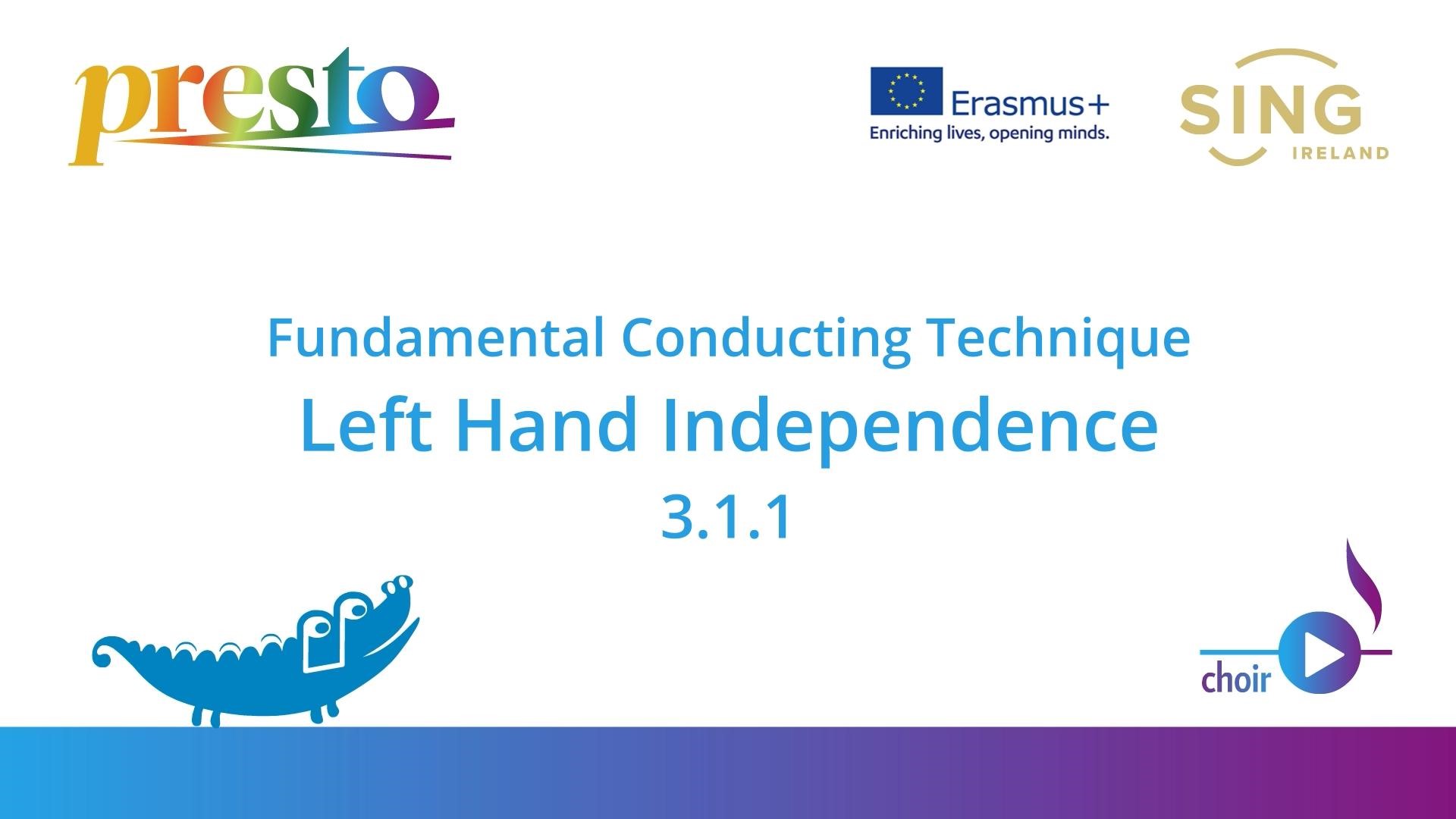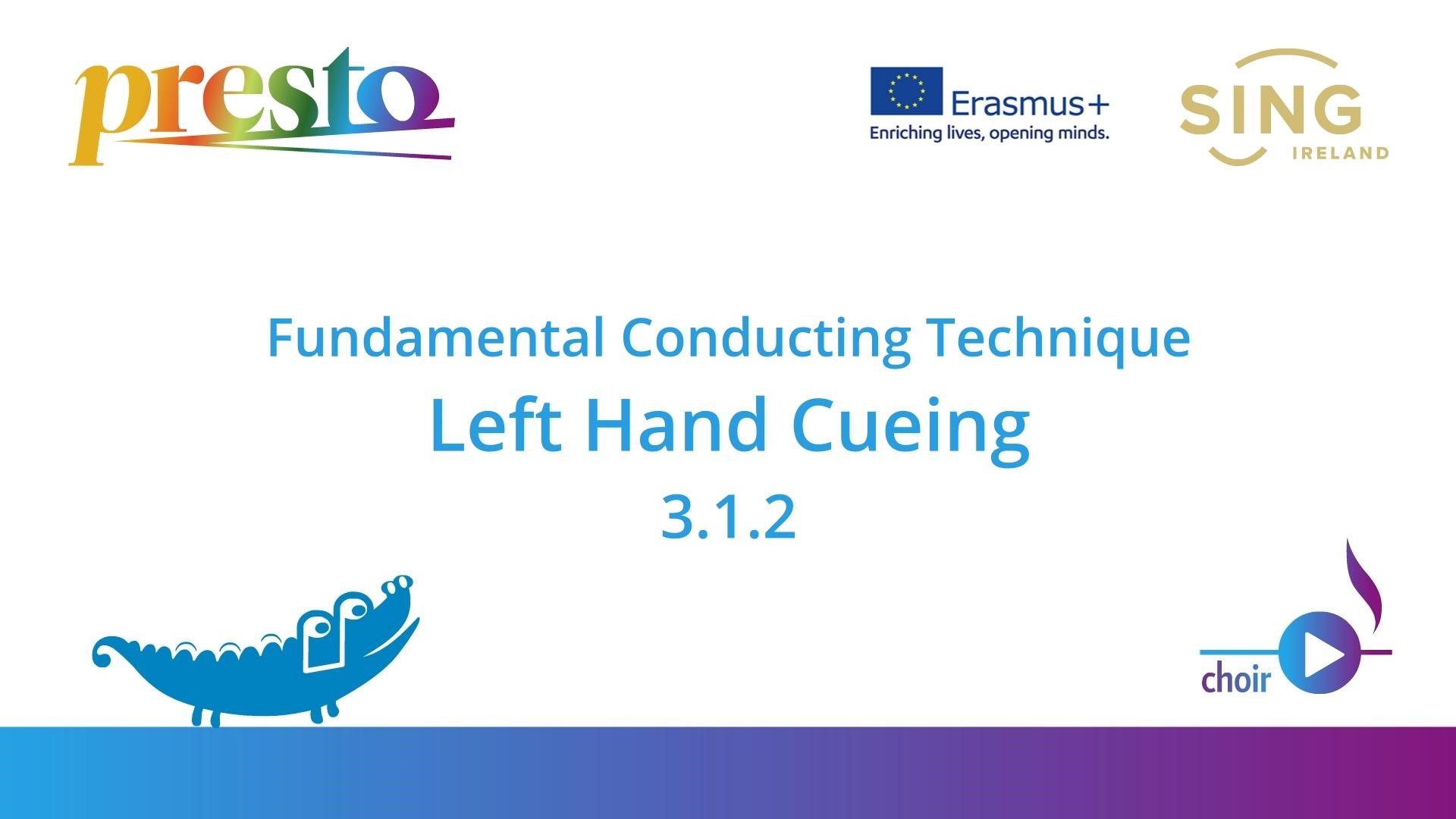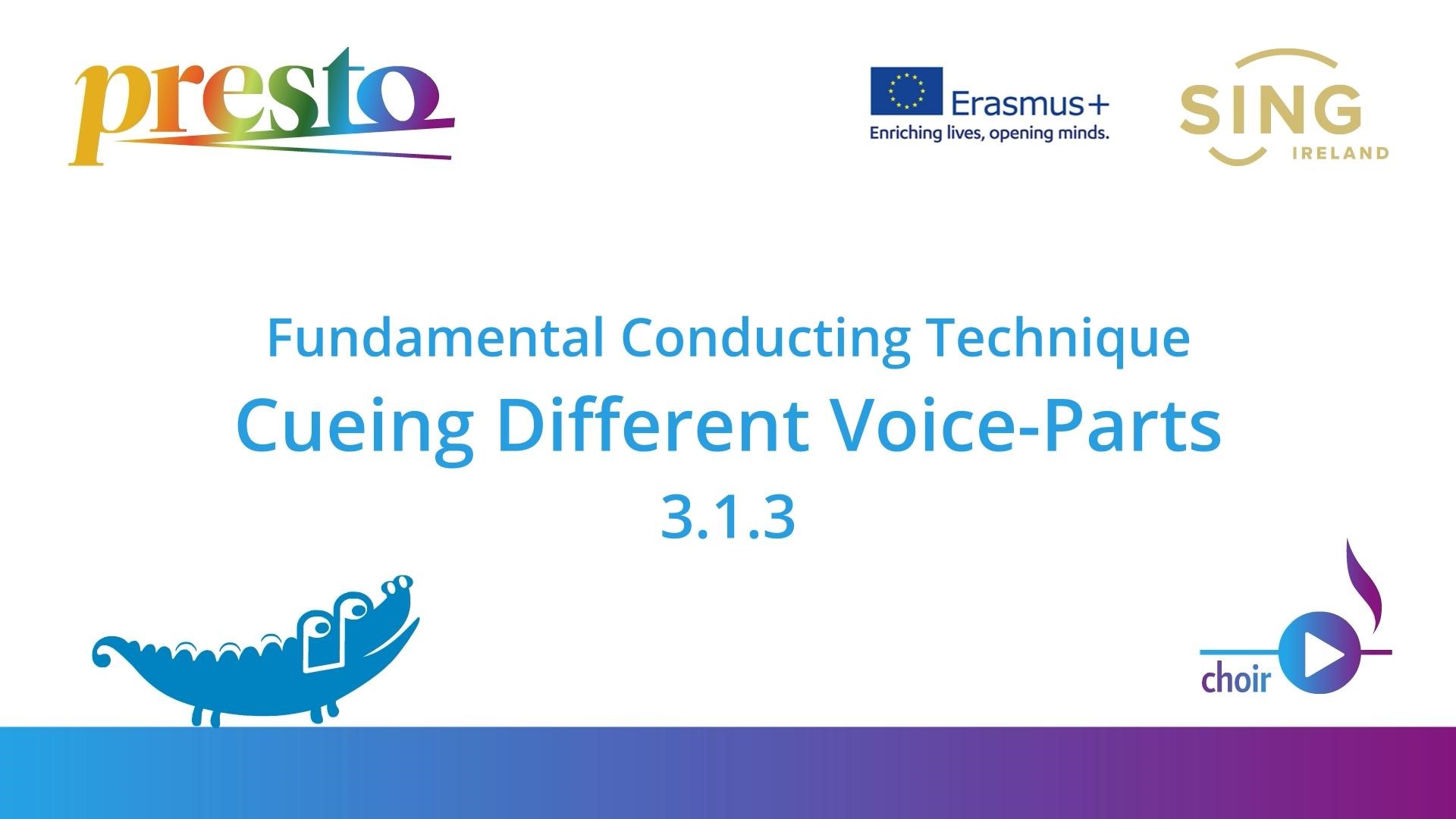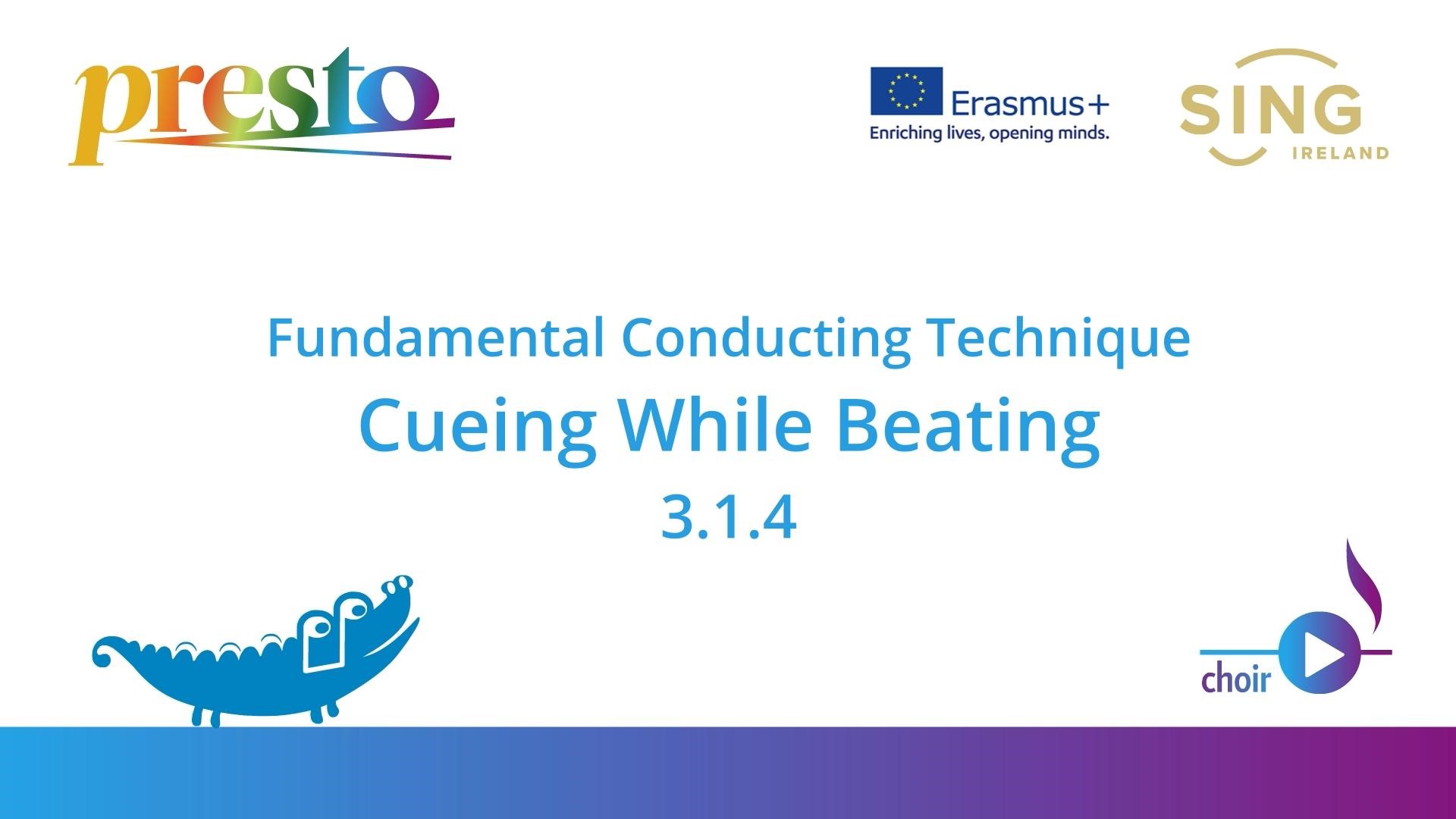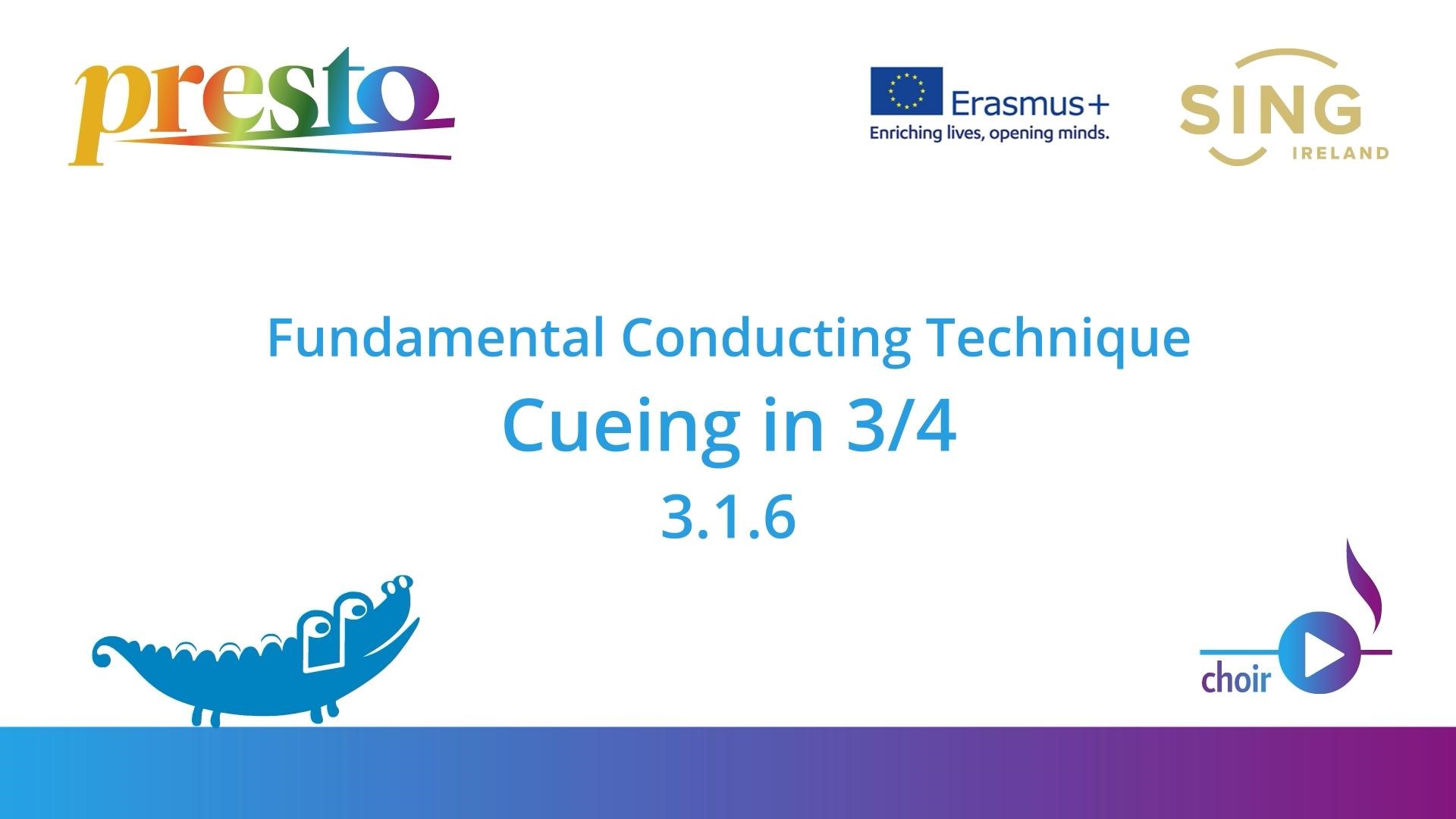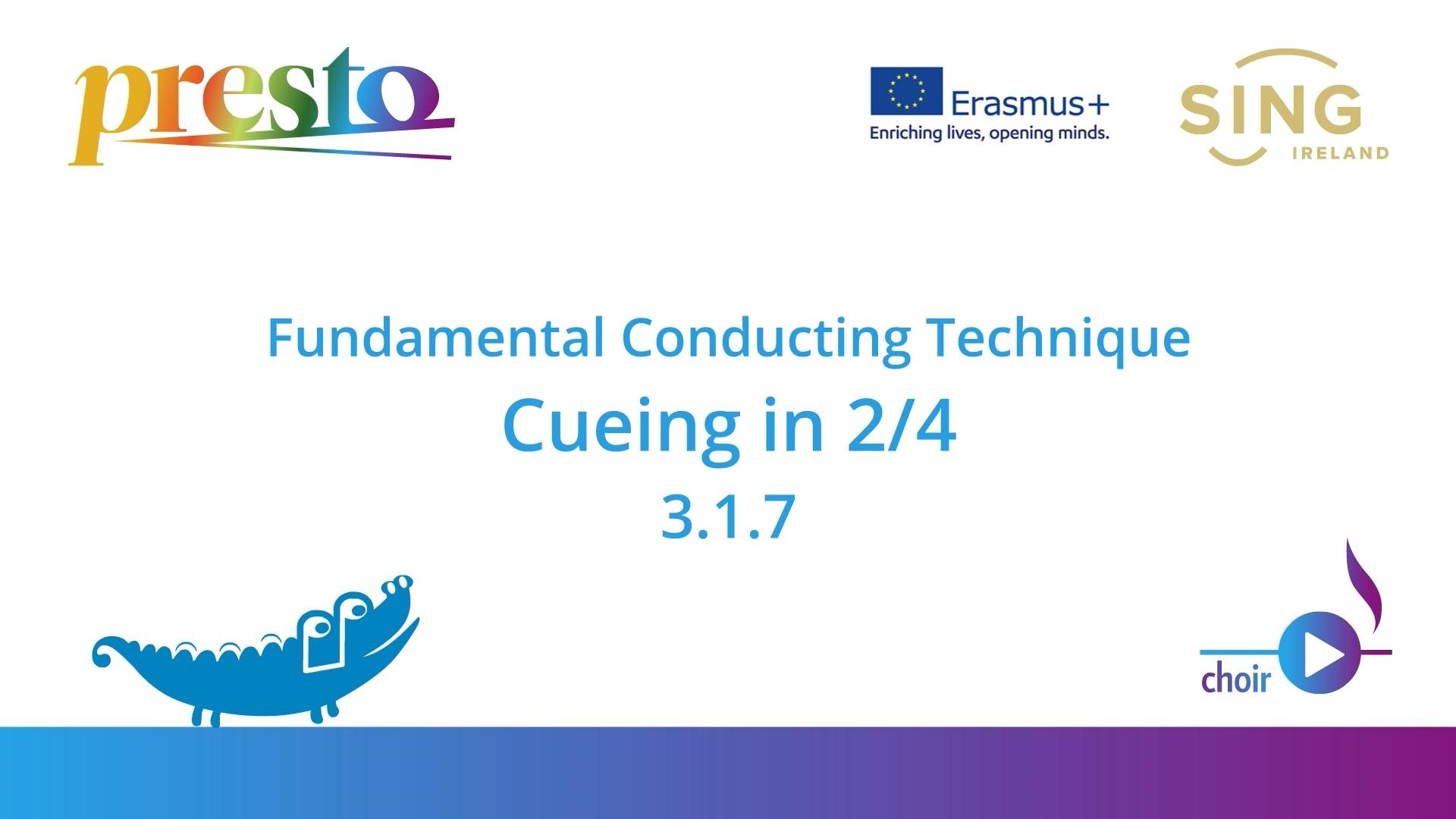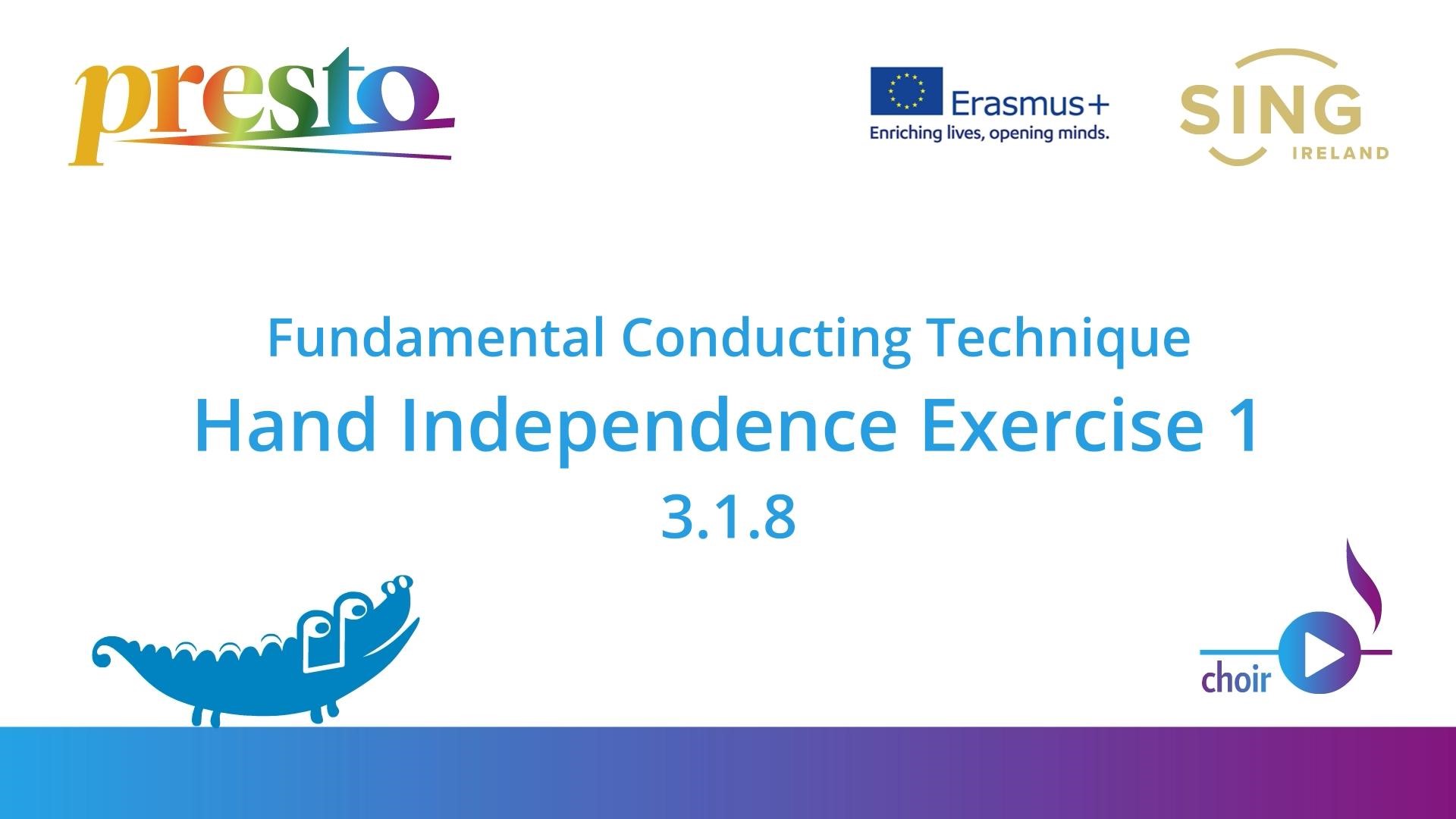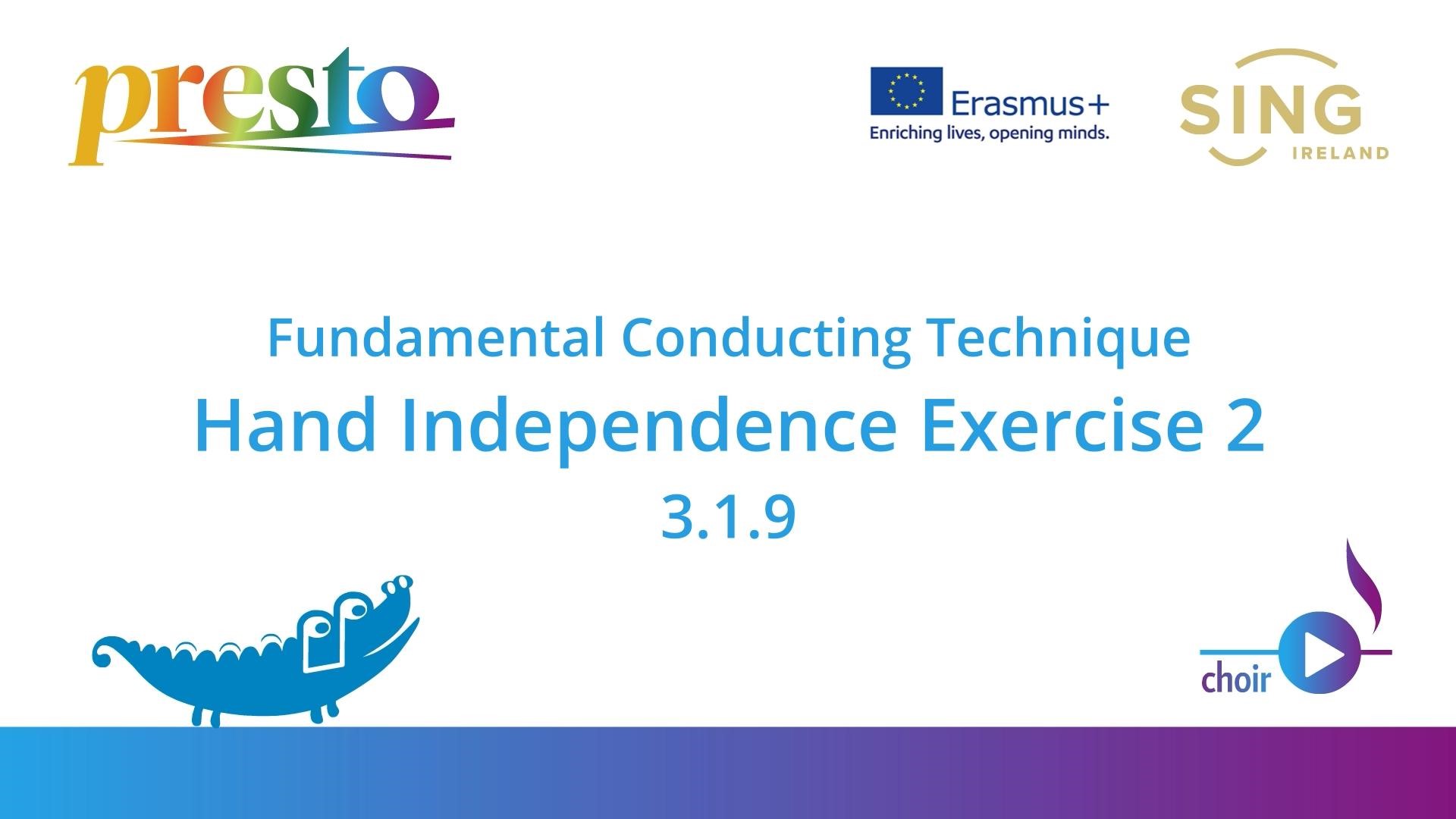One of the areas where your left hand has an important role is cueing. A cue prepares your singers to enter and requires the same principle of anticipation that you’ve already met in starts and cut-offs. But a cue must also ensure the precision of the entry and indicate the correct character. When you’re cueing, your left hand has more freedom than the right hand – busy with beating – to support both precision and character.
Example: if you’re in 4/4 and there’s a tenor entry on the first beat, you begin your preparatory gesture on the fourth. On the fourth beat, your left hand bounces upwards and then lands on the first beat to tell your tenors to start. Where possible you would aim this gesture towards the voice part that you’re cueing, in this case the tenors.
You will strengthen the connection with your singers, and the confidence with which they enter, whenever you show the breath as part of your cueing gesture.
Although you’ll see conductors using their eyes, facial expressions, head movements and body movements, it’s important for you as a beginner to confine your gesture to your left hand cueing and showing the breathing.

